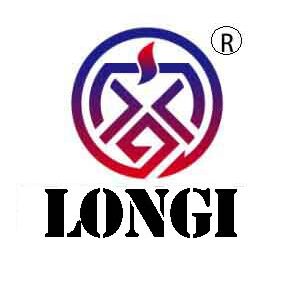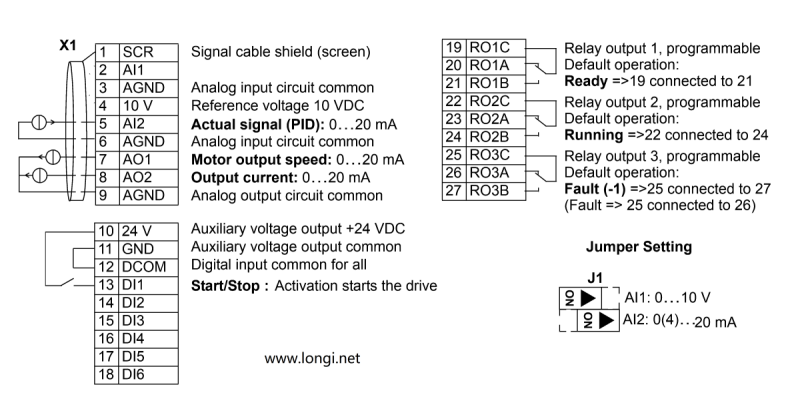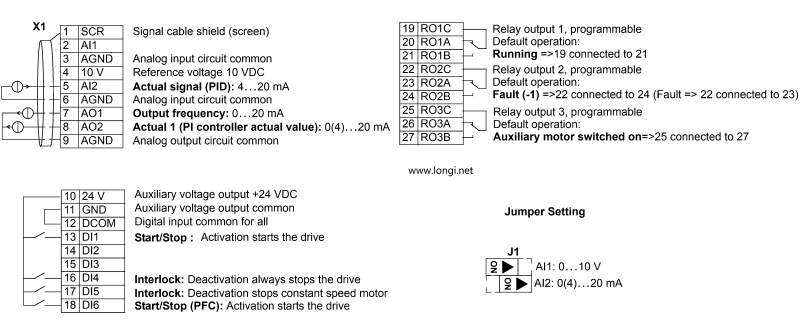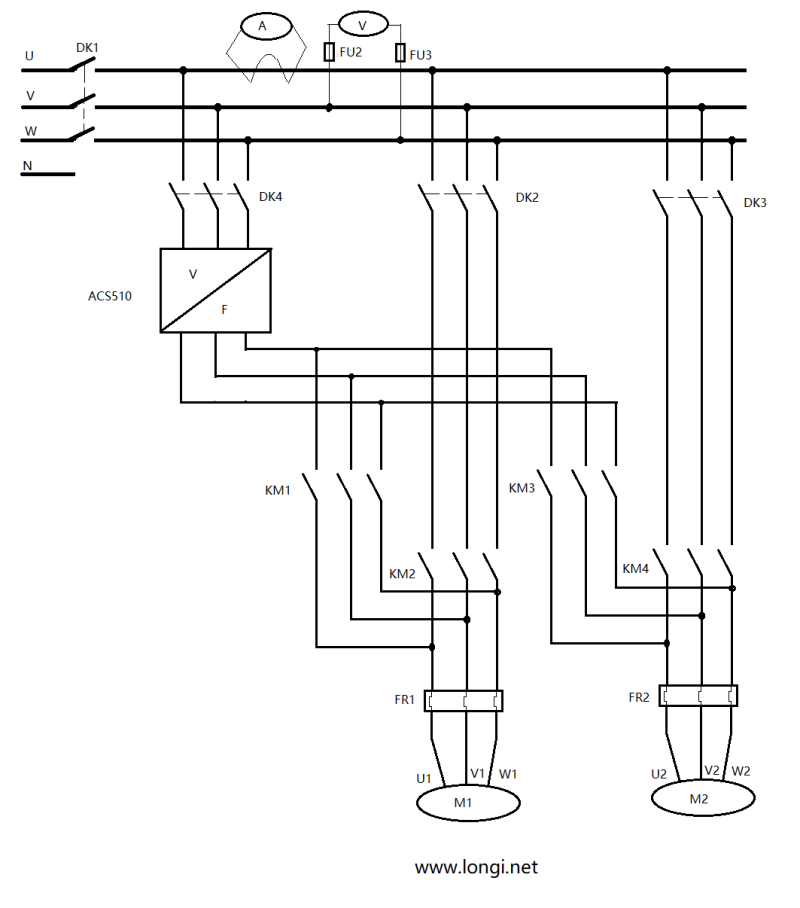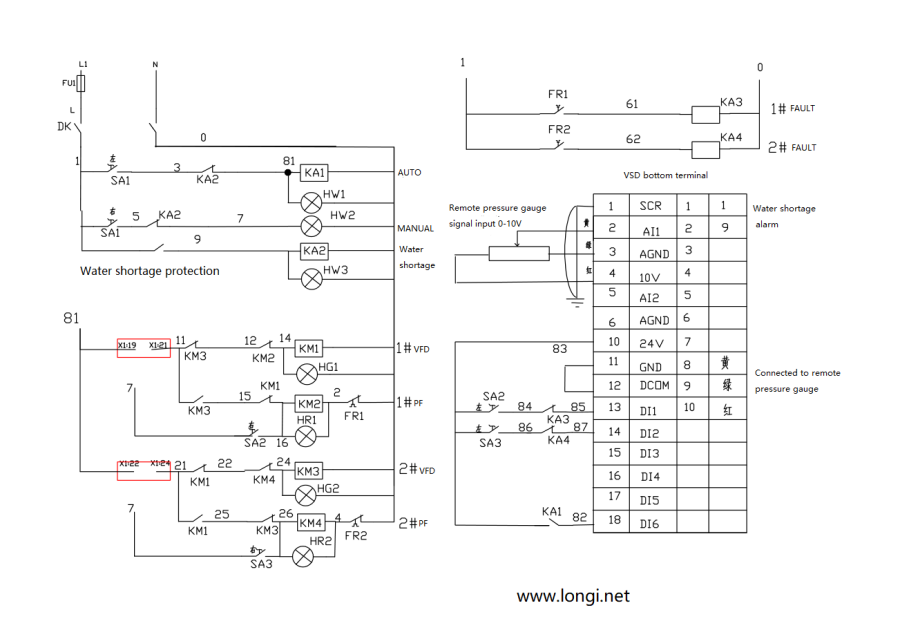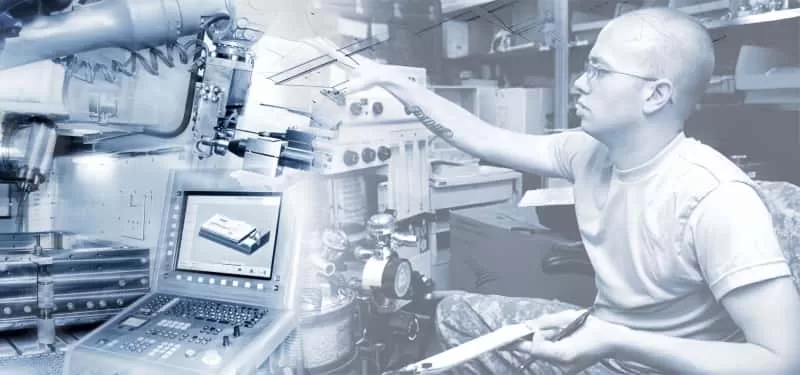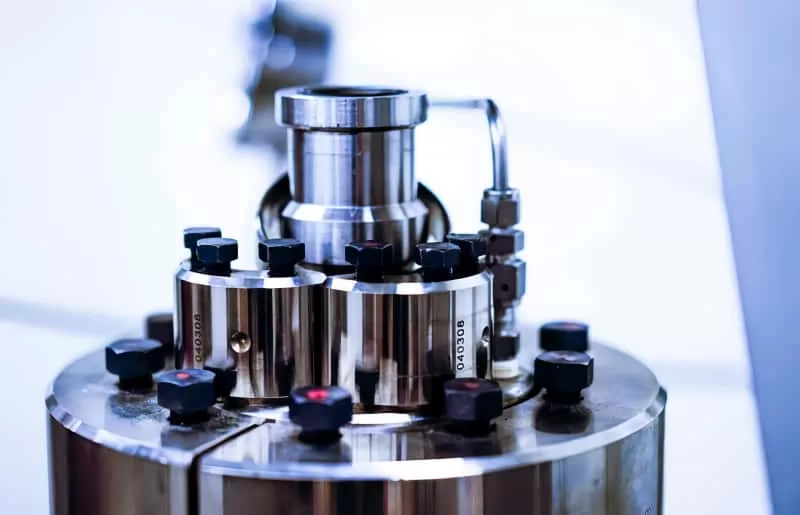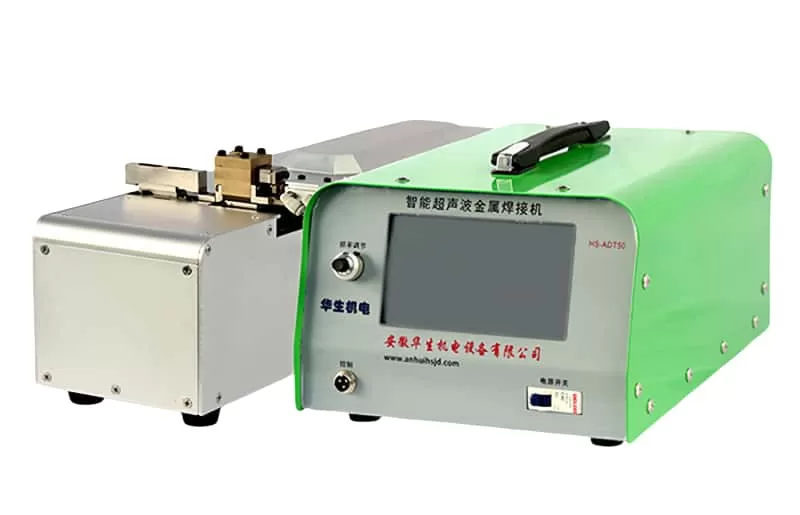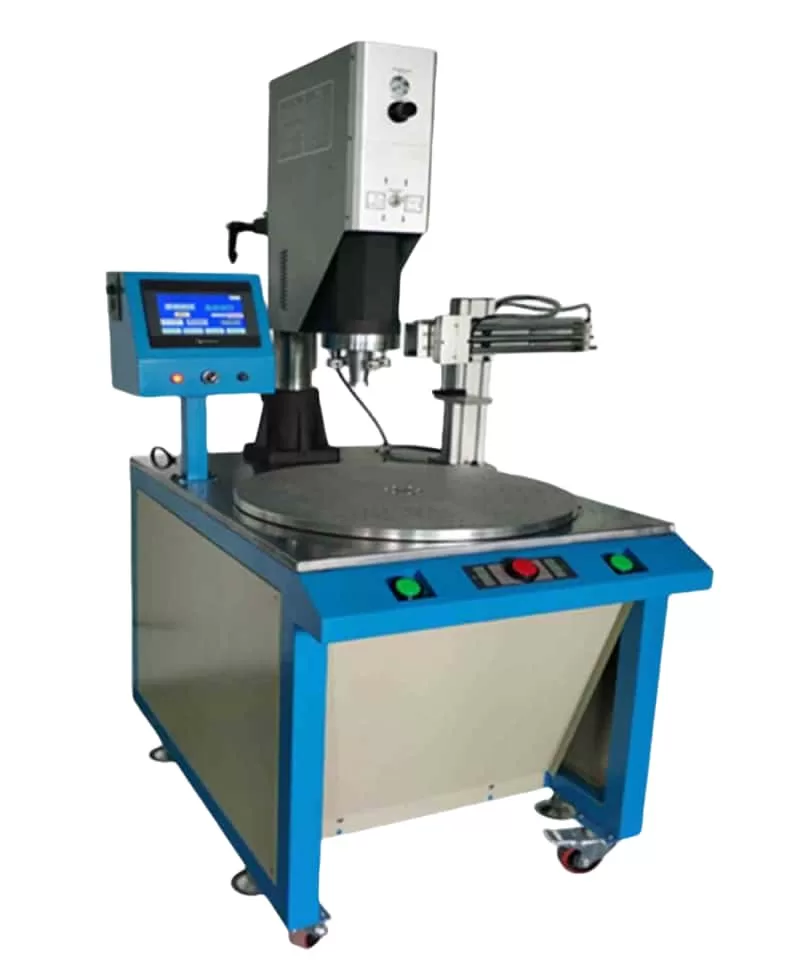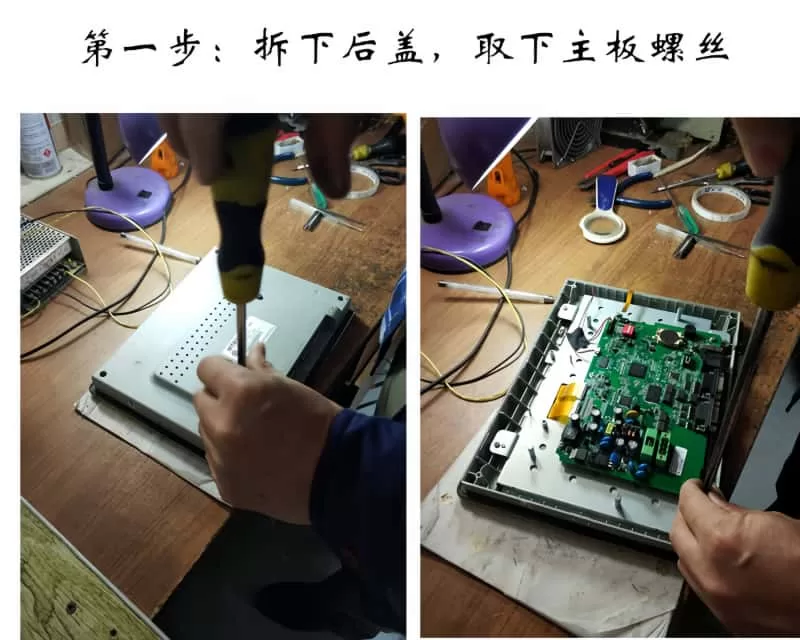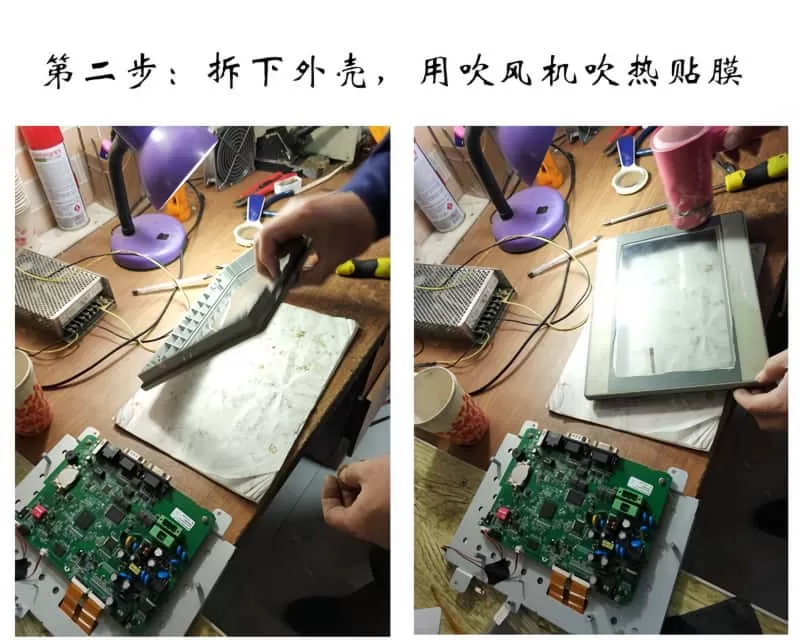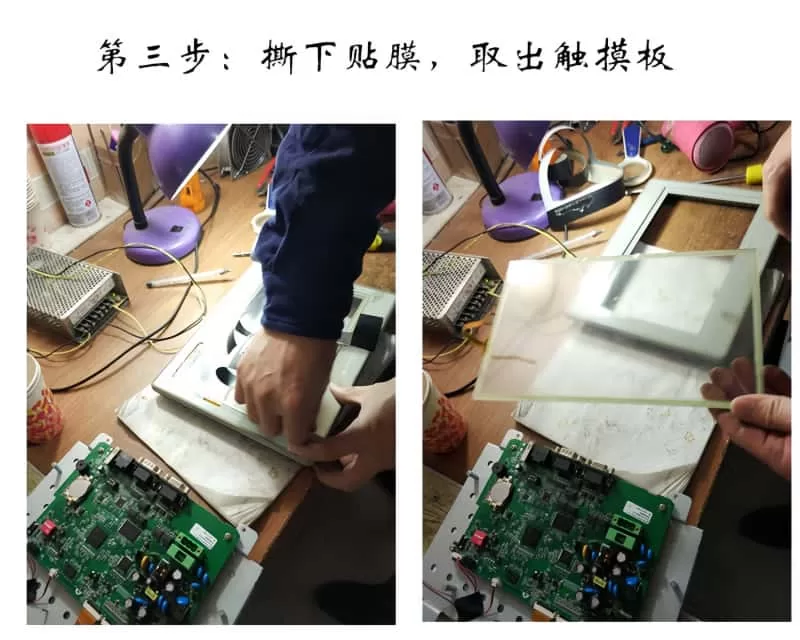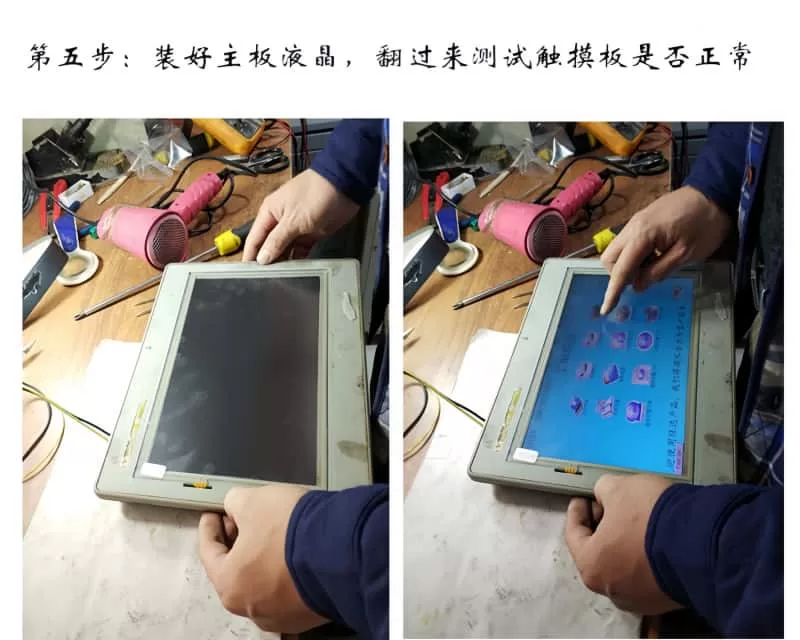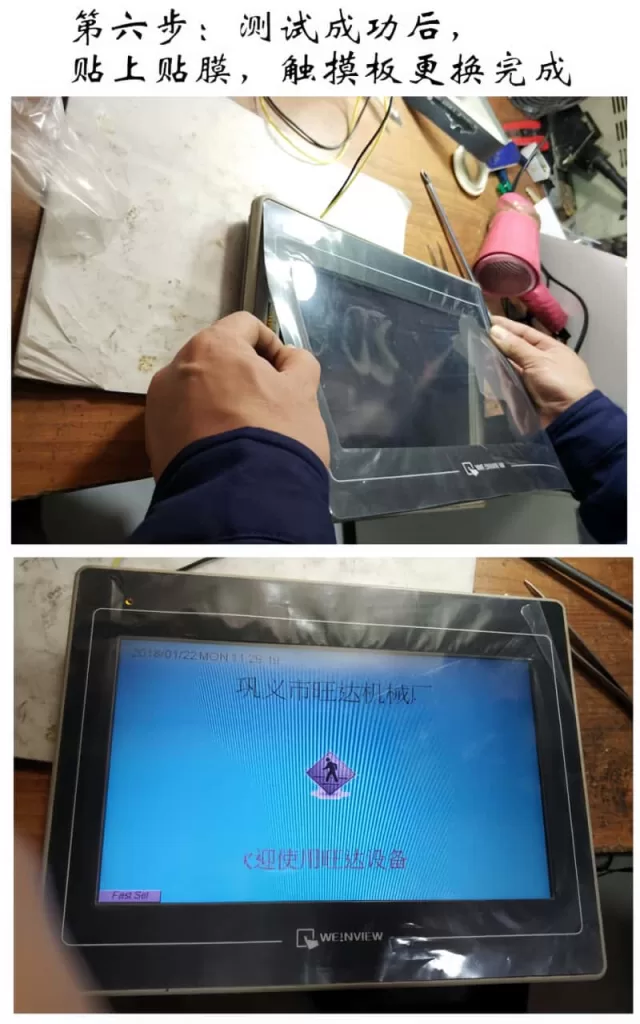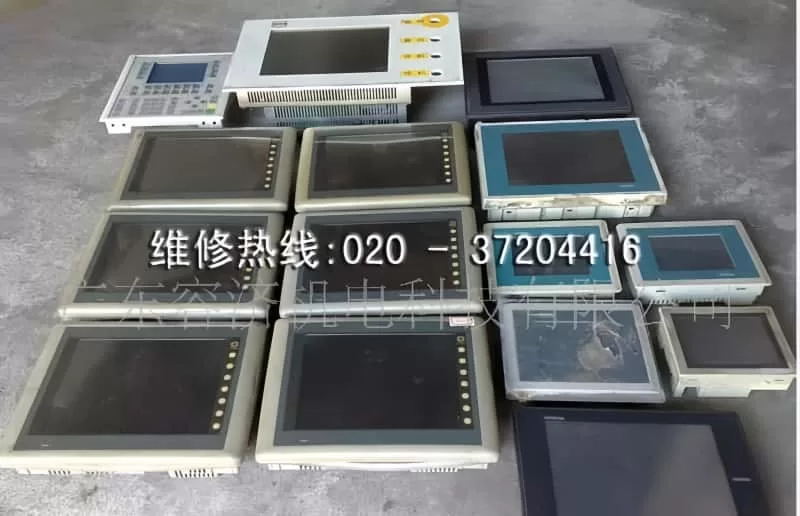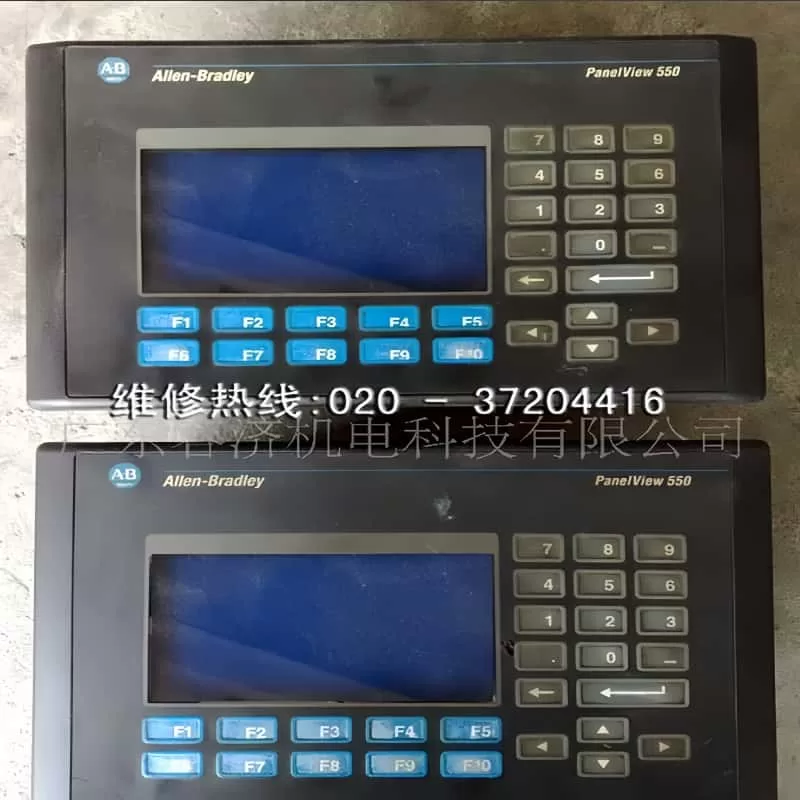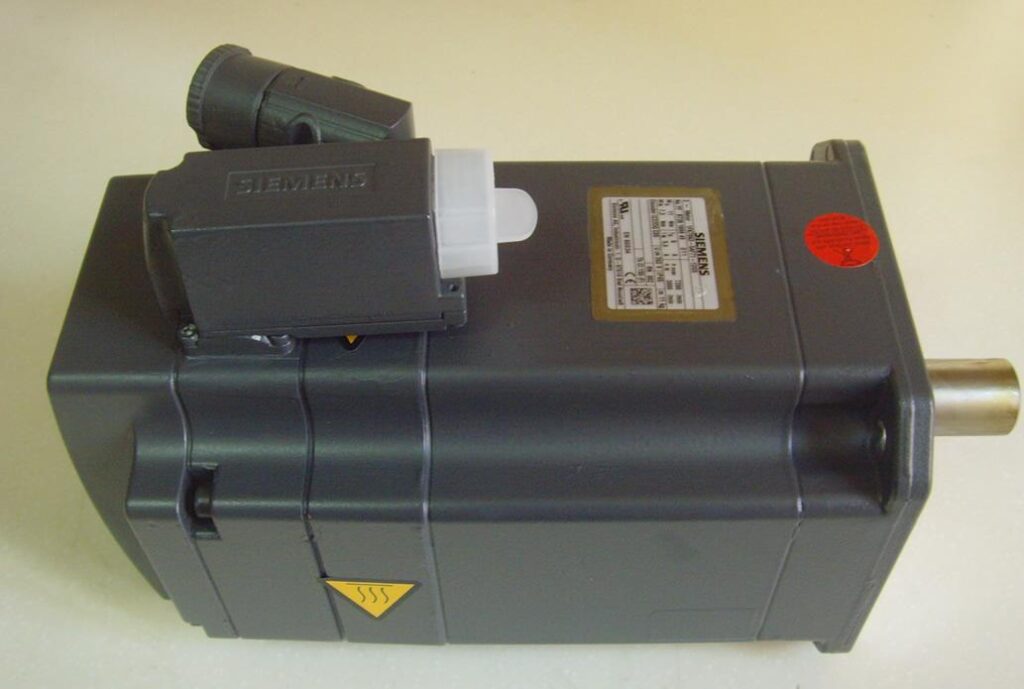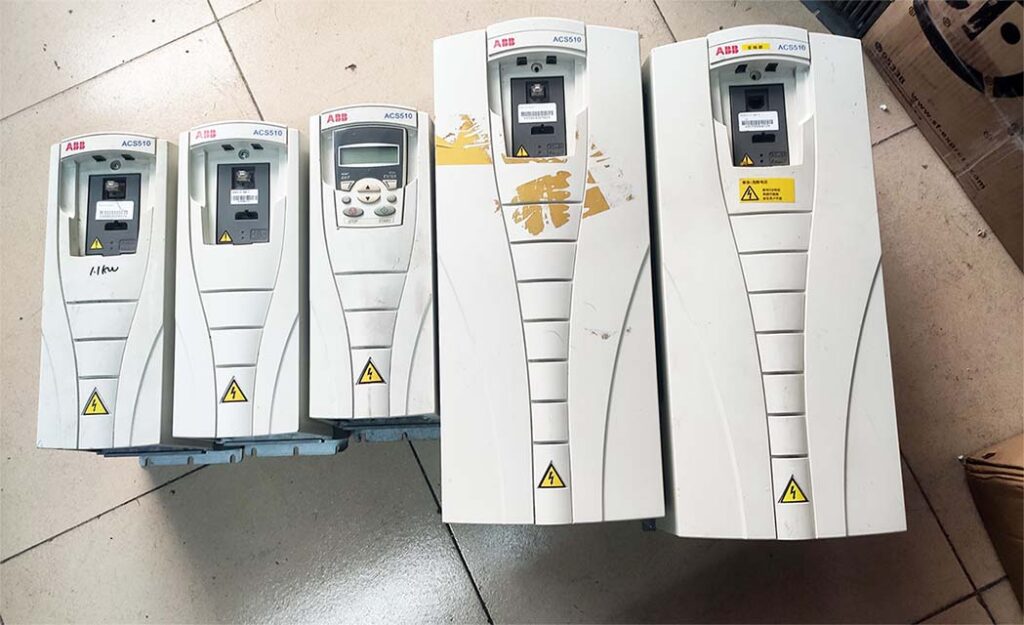ABB VFD ACS355 Series Inverter: Technological Innovation and Feature Overview
ABB’s VFD ACS355 series of inverters, as a leading player in variable frequency drive technology, stands out for its superior performance, user-friendly interface, and high reliability, occupying a prominent position in numerous industrial applications. Below is an in-depth exploration of the core features of this series of inverters:
- Compact and Efficient Design Philosophy
- Space Optimization: The compact design of the ACS355 series inverters significantly saves installation space, making them an ideal choice for environments with limited space.
- High-Efficiency Performance: Despite their small size, the advanced control algorithms integrated within ensure efficient motor operation, suitable for a wide range of industrial applications.
- Intuitive and User-Friendly Interface
- Smart Control Panel: Equipped with a high-brightness LED display and intuitive operation buttons, making parameter setting and monitoring simple and quick.
- Customizable Interface: Users can customize the interface layout according to their actual needs, improving operational efficiency.
- Precise Motor Control Strategy
- Vector Control: Supports high-precision vector control, enabling precise adjustment of motor speed and torque to meet performance requirements under various load conditions.
- Adaptive Algorithm: The built-in adaptive algorithm automatically adjusts control parameters based on actual operating conditions, optimizing motor performance.
- Excellent Durability and Environmental Adaptability
- Robust Enclosure Design: Made from high-strength materials, it effectively withstands dust, humidity, and temperature fluctuations in harsh industrial environments.
- Wide Operating Temperature Range: A specially designed cooling system ensures stable operation of the inverter over a broad temperature range.
- Flexible Connectivity and Communication Options
- Multiple Communication Interfaces: Built-in Ethernet, RS-485, and other communication interfaces facilitate seamless integration with PLCs, HMIs, and other devices.
- Support for Open Protocols: Compatibility with Modbus, Profibus, and other open communication protocols enhances system interoperability and scalability.
- Comprehensive Protection Mechanisms
- Multiple Protections: Integrated overcurrent, overvoltage, undervoltage, overheat, and other protection mechanisms ensure the safe operation of drives and motors.
- Fault Early Warning: Real-time monitoring of key parameters provides early warning of potential faults, reducing downtime risks.
LED status description and alarm meaning
| Where | LED off | LED lit and steady | LED blinking | ||||||
|---|---|---|---|---|---|---|---|---|---|
| On the front of the drive. If a control panel is attached to the drive, switch to remote control (otherwise a fault will be generated), and then remove the panel to be able to see the LEDs |
No power | Green | Power supply on the board OK |
Green | Drive in an alarm state |
||||
| Red | Drive in a fault state. To reset the fault, press RESET from the control panel or switch off the drive power |
Red | Drive in a fault state. To reset the fault, switch off the drive power |
||||||
| At the top left corner of the assistant control panel |
Panel has no power or no drive connection. |
Green | Drive in a normal state |
Green | Drive in an alarm state |
||||
| Red | Drive in a fault state. To reset the fault, press RESET from the control panel or switch off the drive power |
Red | |
||||||
ABB Drives ACS355 Fault Codes List mamual,”Fault” means that the drive has experienced a serious malfunction, usually a hardware issue that needs to be removed for repair.
| CODE | FAULT | CAUSE | WHAT TO DO |
|---|---|---|---|
| 1 | OVERCURRENT (2310) 0305 bit 0 |
Output current has exceeded trip level. | |
| Sudden load change or stall. | Check motor load and mechanics. | ||
| Insufficient acceleration time. | Check acceleration time (2202 and 2205). Check the possibility of using vector control. | ||
| Incorrect motor data. | Check that motor data (Group 99) is equal to motor rating plate values. If using vector control, perform ID run (9910). | ||
| Motor and/or drive is too small for the application. | Check sizing. | ||
| Damaged motor cables, damaged motor or wrong motor connection (star/delta). | Check motor, motor cable and connections (including phasing). | ||
| Internal fault of the drive. Drive gives an overcurrent fault after start command even when the motor is not connected (use scalar control in this trial). | Replace the drive. | ||
| High frequency noise in STO lines. | Check the STO cabling and remove the noise sources nearby. | ||
| 2 | DC OVERVOLT (3210) 0305 bit 1 |
Excessive intermediate circuit DC voltage. DC overvoltage trip limit is 420 V for 200 V drives and 840 V for 400 V drives. |
|
| Supply voltage is too high or noisy. Static or transient overvoltage in the input power supply. | Check input voltage level and check power line for static or transient overvoltage | ||
| If the drive is used in a floating network, DC overvoltage fault may appear | In a floating network, remove the EMC screw from the drive. |
| CODE | FAULT | CAUSE | WHAT TO DO |
|---|---|---|---|
| If the overvoltage fault appears during deceleration, possible causes are: • Overvoltage controller disabled. • Deceleration time is too short. • Faulty or undersized braking chopper. |
• Check that overvoltage controller is on (parameter 2005 OVERVOLT CTRL). • Check deceleration time (2203, 2206). • Check brake chopper and resistor (if used). DC overvoltage control must be deactivated when brake chopper and resistor is used (parameter 2005 OVERVOLT CTRL). Retrofit drive with brake chopper and brake resistor. |
||
| 0003 | DEV OVERTEMP (4210) 0305 bit 2 |
Drive IGBT temperature is excessive. The fault trip limit depends on the drive type and size. | |
| Ambient temperature is too high. | Check ambient conditions. See also section Derating on page 378. | ||
| Airflow through the inverter is not free. | Check air flow and free space above and below the drive (see section Free space around the drive on page 34). | ||
| Fan is not working properly | Check fan operation. | ||
| Overloading of the drive. | 50% overload is allowed for one minute in ten minutes. If higher switching frequency (parameter 2606) is used, follow the Derating rules on page 378. | ||
| 0004 | SHORT CIRC (2340) 0305 bit 3 |
Short-circuit in motor cable(s) or motor. | |
| Damaged motor or motor cable. | Check motor and cable insulation. Check motor winding | ||
| Internal fault of the drive. Drive gives an overcurrent fault after start command even when the motor is not connected (use scalar control in this trial). | Replace the drive. | ||
| High frequency noise in STO lines. | Check the STO cabling and remove the noise sources nearby. | ||
| 0006 | DC UNDERVOLT (3220) 0305 bit 5 |
Intermediate circuit DC voltage is not sufficient. | Check input power supply and fuses. |
| Undervoltage controller disabled. | Check that undervoltage controller is on (parameter 2006 UNDERVOLT CTRL). |
| CODE | FAULT | CAUSE | WHAT TO DO |
|---|---|---|---|
| Missing input power line phase. | Measure the input and DC voltage during start, stop and running by using a multimeter or check parameter 0107 DC BUS VOLTAGE. | ||
| Blown fuse | Check the condition of input fuses. | ||
| Rectifier bridge internal fault. | Replace the drive. | ||
| 0007 | AI1 LOSS (8110) 0305 bit 6 |
Analog input AI1 signal has fallen below limit defined by parameter 3021 AI1 FAULT LIMIT. |
|
| (programmable fault function 3001, 3021) | |||
| Analog input signal is weak or does not exist. | Check the source and wire connections of the analog input. | ||
| Analog input signal is lower than fault limit. | Check parameters 3001 AI<MIN FUNCTION and 3021 AI1 FAULT LIMIT. | ||
| 0008 | AI2 LOSS (8110) 0305 bit 7 |
Analog input AI2 signal has fallen below limit defined by parameter 3022 AI2 FAULT LIMIT. |
. |
| (programmable fault function 3001, 3022) |
|||
| Analog input signal is weak or does not exist. | Check the source and wire connections of analog input. | ||
| Analog input signal is lower than fault limit. | Check parameters 3001 AI<MIN FUNCTION and 3021 AI1 FAULT LIMIT. |
| CODE | FAULT | CAUSE | WHAT TO DO |
|---|---|---|---|
| 0009 | MOT OVERTEMP (4310) 0305 bit 8 (programmable fault function 3005…3009 3504) |
Motor temperature estimation is too high. | |
| Excessive load or insufficient motor power | Check motor ratings, load and cooling. | ||
| Incorrect start-up data. | Check start-up data. Check fault function parameters 3005…3009. Minimize IR compensation to avoid heating (parameter 2603 IR COMP VOLT). Check frequency of the motor (low running frequency of motor with high input current can cause this fault). Let the motor cool down. The necessary cooling time period depends on the value of parameter 3006 MOT THERM TIME. Motor temperature estimation is counted down only when the drive is powered on. |
||
| Measured motor temperature has exceeded the fault limit set by parameter 3504 FAULT LIMIT. | Check value of fault limit. Check that actual number of sensors corresponds to value set by parameter 3501 SENSOR TYPE. Let the motor cool down. Ensure proper motor cooling: Check the cooling fan, clean cooling surfaces, etc. |
||
| 0010 | PANEL LOSS (5300) 0305 bit 9 (programmable fault function 3002) |
Control panel selected as active control location for drive has ceased communicating. | Check panel connection. Check fault function parameters. Check parameter 3002 PANEL COMM ERR. Check control panel connector. Refit control panel in mounting platform. If the drive is in external control mode (REM) and is set to accept start/stop, direction commands or references through control panel: Check group 10 START/STOP/DIR and 11 REFERENCE SELECT settings. |
| 0011 | ID RUN FAIL (FF84) 0305 bit 10 |
Motor ID run is not completed successfully. | Check motor connection. Check start-up data (group 99 START- UP DATA). Check maximum speed (parameter 2002). It should be at least 80% of motor nominal speed (parameter 9908). Ensure ID run has been performed according to instructions in section ID run procedure on page 71. |
| CODE | FAULT | CAUSE | WHAT TO DO |
|---|---|---|---|
| 0012 | MOTOR STALL (7121) 0305 bit 11 (programmable fault function 3010…3012) |
Motor is operating in stall region due to, eg, excessive load or insufficient motor power. | Check motor load and drive ratings. Check fault function parameters 3010…3012. |
| 0014 | EXT FAULT 1 (9000) 0305 bit 13 (programmable fault function 3003) |
External fault 1 | Check external devices for faults. Check parameter 3003 EXTERNAL FAULT 1 setting. |
| 0015 | EXT FAULT 2 (9001) 0305 bit 14 (programmable fault function 3004) |
External fault 2 | Check external devices for faults. Check parameter 3004 EXTERNAL FAULT 2 setting. |
| 0016 | EARTH FAULT (2330) 0305 bit 15 (programmable fault function 3017) |
Drive has detected earth (ground) fault in motor or motor cable. | Check motor. Check motor cable. Motor cable length must not exceed maximum specifications. See section Motor connection data on page 387. Note: Disabling earth fault (ground fault) may damage drive. |
| Drive internal fault. | Internal short-circuit may cause earth fault indication. This has happened if fault 0001 appears after disabling the earth fault. Replace the drive. | ||
| 0017 | UNDERLOAD (FF6A) 0306 bit 0 (programmable fault function 3013…3015) |
Motor load is too low due to, eg, release mechanism in driven equipment. | Check for problem in driven equipment. Check fault function parameters 3010…3012. Check motor power against drive power. |
| 0018 | THERM FAIL (5210) 0306 bit 1 |
Temperature of the drive exceeds the operating level of the thermistor. | Check that the ambient temperature is not too low. |
| Drive internal fault. Thermistor used for drive internal temperature measurement is open or short-circuited | Replace the drive. | ||
| 0021 | CURR MEAS (2211) 0306 bit 4 |
Drive internal fault. Current measurement is out of range. | Replace the drive. |
| CODE | FAULT | CAUSE | WHAT TO DO |
|---|---|---|---|
| 0022 | SUPPLY PHASE (3130) 0306 bit 5 (programmable fault function 3016) |
Intermediate circuit DC voltage is oscillating due to missing input power line phase or blown fuse. | Check input power line fuses and installation. Check for input power supply imbalance. Check the load. |
| Trip occurs when DC voltage ripple exceeds 14% of nominal DC voltage. | Check fault function parameter 2619 DC STABILIZER. | ||
| 0023 | ENCODER ERR (7301) 0306 bit 6 (programmable fault function 5003) |
Communication fault between pulse encoder and pulse encoder interface module or between module and drive. | Check pulse encoder and its wiring, pulse encoder interface module and its wiring and parameter group 50 ENCODER settings. |
| 0024 | OVERSPEED (7310) 0306 bit 7 |
Motor is turning faster than 120% of the highest allowed speed due to incorrectly set minimum/maximum speed, insufficient braking torque or changes in load when using torque reference. Operating range limits are set by parameters 2001 MINIMUM SPEED and 2002 MAXIMUM SPEED (in vector control) or 2007 MINIMUM FREQ and 2008 MAXIMUM FREQ (in scalar control). |
Check minimum/maximum frequency settings (parameters 2001 MINIMUM SPEED and 2002 MAXIMUM SPEED). Check adequacy of motor braking torque. Check applicability of torque control. Check need for brake chopper and resistor(s). |
| 0027 | CONFIG FILE (630F) 0306 bit 10 |
Internal configuration file error | Replace the drive. |
| 0028 | SERIAL 1 ERR (7510) 0306 bit 11 (programmable fault function 3018, 3019) |
Fieldbus communication break | Check status of fieldbus communication. See chapter Fieldbus control with embedded fieldbus on page 313, chapter Fieldbus control with fieldbus adapter on page 339 or appropriate fieldbus adapter manual. Check fault function parameter 3018 COMM FAULT FUNC and 3019 COMM FAULT TIME settings. Check connections and/or noise on the line. Check if master can communicate. |
| 0029 | EFB CON FILE (6306) 0306 bit 12 |
Configuration file reading error | Error in reading the configuration files of the embedded fieldbus. See fieldbus user’s manual. |
| CODE | FAULT | CAUSE | WHAT TO DO |
|---|---|---|---|
| 0030 | FORCE TRIP (FF90) 0306 bit 13 |
Trip command received from fieldbus | Fault trip was caused by fieldbus. See fieldbus user’s manual. |
| 0034 | MOTOR PHASE (FF56) 0306 bit 14 |
Motor circuit fault due to missing motor phase or motor thermistor relay (used in motor temperature measurement) fault. | Check motor and motor cable. Check motor thermistor relay (if used). |
| 0035 | OUTP WIRING (FF95) 0306 bit 15 (programmable fault function 3023) |
Incorrect input power and motor cable connection (ie, input power cable is connected to drive motor connection). | Possible power wiring error detected. Check that input power connections are not connected to drive output. Fault can be declared if input power is delta grounded system and motor cable capacitance is large. This fault can be disabled by parameter 3023 WIRING FAULT. |
| 0036 | INCOMPATIBLE SW (630F) 0307 bit 3 |
Loaded software is not compatible. | Loaded software is not compatible with the drive. Contact your local ABB representative. |
| 0037 | CB OVERTEMP (4110) 0305 bit 12 |
Drive control board overheated. Fault given when measured temperature of the control board (indicated by signal 0150 CB TEMP) reaches 95 °C for an IP20 drive or 102 °C for an IP66 drive (ACS355-…+B063). | Check for excessive ambient temperature. Check for fan failure. Check for obstructions in air flow. Check the dimensioning and cooling of cabinet. |
| Parameter 3024 CB TEMP FAULT is set to enable with fault. | |||
| 0044 | SAFE TORQUE OFF (FFA0) 0307 bit 4 |
STO (Safe torque off) requested and it functions correctly. Parameter 3025 STO OPERATION is set to react with fault. |
If this was not expected reaction to safety circuit interruption, check cabling of safety circuit connected to STO terminals X1C. If different reaction is required, change value of parameter 3025 STO OPERATION. |
| Reset fault before starting. | |||
| 0045 | STO1 LOST (FFA1) 0307 bit 5 |
STO (Safe torque off) input channel 1 has not de-energized, but channel 2 has. Opening contacts on channel 1 might have been damaged or there is a short-circuit. | Check STO circuit cabling and opening of contacts in STO circuit. |
| CODE | FAULT | CAUSE | WHAT TO DO |
|---|---|---|---|
| 0046 | STO2 LOST (FFA2) 0307 bit 6 |
STO (Safe torque off) input channel 2 has not de-energized, but channel 1 has. Opening contacts on channel 2 might have been damaged or there is a short-circuit. | Check STO circuit cabling and opening of contacts in STO circuit. |
| 0101 | SERF CORRUPT (FF55) 0307 bit 14 |
Drive internal error. | Replace the drive. |
| 0103 | SERF MACRO (FF55) 0307 bit 14 |
||
| 0201 | DSP T1 OVERLOAD | Drive internal error. | If fieldbus is in use, check the communication, settings and contacts. |
| (6100) 0307 bit 13 |
Write down fault code and contact your local ABB representative. | ||
| 0202 | DSP T2 OVERLOAD | ||
| (6100) | |||
| 0307 bit 13 | |||
| 0203 | DSP T3 OVERLOAD | ||
| (6100) | |||
| 0307 bit 13 | |||
| 0204 | DSP STACK ERROR | ||
| (6100) | |||
| 0307 bit 12 | |||
| 0206 | CB ID ERROR (5000) 0307 bit 11 |
Drive internal error. | Replace the drive. |
| 1000 | PAR HZRPM (6320) 0307 bit 15 |
Incorrect speed/frequency limit parameter setting | Check parameter settings. Check that following applies: • 2001 MINIMUM SPEED < 2002 MAXIMUM SPEED • 2007 MINIMUM FREQ < 2008 MAXIMUM FREQ • 2001 MINIMUM SPEED / 9908 MOTOR NOM SPEED, 2002 MAXIMUM SPEED / 9908 MOTOR NOM SPEED, 2007 MINIMUM FREQ 9907 MOTOR NOM FREQ and 2008 MAXIMUM FREQ 9907 MOTOR NOM FREQ are within range. |
| CODE | FAULT | CAUSE | WHAT TO DO |
|---|---|---|---|
| 1003 | PAR AI SCALE (6320) 0307 bit 15 |
Incorrect analog input AI signal scaling | Check parameter group 13 ANALOG INPUTS settings. Check that following applies: • 1301 MINIMUM AI1 < 1302 MAXIMUM AI1 • 1304 MINIMUM AI2 < 1305 MAXIMUM AI2. |
| 1004 | PAR AO SCALE (6320) 0307 bit 15 |
Incorrect analog output AO signal scaling | Check parameter group 15 ANALOG OUTPUTS settings. Check that following applies: • 1504 MINIMUM AO1 < 1505 MAXIMUM AO1. |
| 1005 | PAR PCU 2 (6320) 0307 bit 15 |
Incorrect motor nominal power setting | Check parameter 9909 MOTOR NOM POWER setting. Following must apply: • 1.1 < (9906 MOTOR NOM CURR · 9905 MOTOR NOM VOLT · 1.73 / PN) < 3.0 Where PN = 1000 · 9909 MOTOR NOM POWER (if units are in kW) or PN = 746 · 9909 MOTOR NOM POWER (if units are in hp). |
| 1006 | PAR EXT RO (6320) 0307 bit 15 (programmable fault function 3027) |
Incorrect relay output extension parameters | Check parameter settings. Check that following applies: • Output relay module MREL-01 is connected to drive. See parameter 0181 EXTENSION. • 1402 RELAY OUTPUT 2, 1403 RELAY OUTPUT 3 and 1410 RELAY OUTPUT 4 have non-zero values. See MREL-01 output relay module user’s manual (3AUA0000035974 [English]). |
| 1007 | PAR FBUSMISS (6320) 0307 bit 15 |
Fieldbus control has not been activated. | Check fieldbus parameter settings. See chapter Fieldbus control with fieldbus adapter on page 339. |
| 1009 | PAR PCU 1 (6320) 0307 bit 15 |
Incorrect motor nominal speed/frequency setting | Check parameter settings. Following must apply for induction motor: • 1 < (60 · 9907 MOTOR NOM FREQ / 9908 MOTOR NOM SPEED) < 16 • 0.8 < 9908 MOTOR NOM SPEED / (60 · 9907 MOTOR NOM FREQ / 9913 MOTOR POLE PAIRS) < 0.992 Following must apply for permanent magnet synchronous motor: • 9908 MOTOR NOM SPEED (60 · 9907 MOTOR NOM FREQ 9913 MOTOR POLE PAIRS) = 1.0 |
| CODE | FAULT | CAUSE | WHAT TO DO |
|---|---|---|---|
| 1015 | PAR USER U/F (6320) 0307 bit 15 |
Incorrect voltage to frequency (U/f) ratio voltage setting. | Check parameter 2610 USER DEFINED U1 … 2617 USER DEFINED F4 settings. |
| 1017 | PAR SETUP 1 (6320) 0307 bit 15 |
Only two of the following can be used simultaneously: MTAC- 01 pulse encoder interface module, frequency input signal or frequency output signal. | Disable frequency output, frequency input or encoder: • change transistor output to digital mode (value of parameter 1804 TO MODE = 0 [DIGITAL]), or • change frequency input selection to other value in parameter groups 11 REFERENCE SELECT, 40 PROCESS PID SET 1, 41 PROCESS PID SET 2 and 42 EXT / TRIM PID, or • disable (parameter 5002 ENCODER ENABLE) and remove MTAC-01 pulse encoder interface module. |
ABB Drives ACS355 Alarm Codes List mamual,The “alarm” message means that the drive only has a fault prompt. Generally, the normal state of the drive can be restored by resetting or powering off before powering on. However, users need to check why such warnings occur to avoid greater damage
| CODE | ALARM | CAUSE | WHAT TO DO |
|---|---|---|---|
| 2001 | OVERCURRENT 0308 bit 0 (programmable fault function 1610) |
Output current limit controller is active. High ambient temperature. |
Check ambient conditions. Load capacity decreases if installation site ambient temperature exceeds 40 °C (104 °F). See section Derating on page 378. For more information, see fault 0001 in Fault messages generated by the drive on page 359. |
| 2002 | OVERVOLTAGE 0308 bit 1 (programmable fault function 1610) |
DC overvoltage controller is active. | For more information, see fault 0002 in Fault messages generated by the drive on page 359. |
| 2003 | UNDERVOLTAGE 0308 bit 2 |
DC undervoltage controller is active. | For more information, see fault 0006 in Fault messages generated by the drive on page 359. |
| 2004 | DIR LOCK 0308 bit 3 |
Change of direction is not allowed. | Check parameter 1003 DIRECTION settings. |
| 2005 | IO COMM 0308 bit 4 (programmable fault function 3018, 3019) |
Fieldbus communication break | Check status of fieldbus communication. See chapter Fieldbus control with embedded fieldbus on page 313, chapter Fieldbus control with fieldbus adapter on page 339 or appropriate fieldbus adapter manual. Check fault function parameter settings. Check connections. Check if master can communicate. |
| 2006 | AI1 LOSS 0308 bit 5 (programmable fault function 3001, 3021) |
Analog input AI1 signal has fallen below limit defined by parameter 3021 AI1 FAULT LIMIT. | For more information, see fault 0007 in Fault messages generated by the drive on page 359. |
| 2007 | AI2 LOSS 0308 bit 6 (programmable fault function 3001, 3022) |
Analog input AI2 signal has fallen below limit defined by parameter 3022 AI2 FAULT LIMIT. | For more information, see fault in 0008 Fault messages generated by the drive on page 359. |
| 2008 | PANEL LOSS 0308 bit 7 (programmable fault function 3002) |
Control panel selected as active control location for drive has ceased communicating. | For more information, see fault 0010 in Fault messages generated by the drive on page 359. |
| 2009 | DEVICE OVERTEMP 0308 bit 8 |
Drive IGBT temperature is excessive. Alarm limit depends on the drive type and size. | Check ambient conditions. See also section Derating on page 378. Check air flow and fan operation. Check motor power against drive power. |
| CODE | ALARM | CAUSE | WHAT TO DO |
|---|---|---|---|
| 2010 | MOTOR TEMP 0308 bit 9 (programmable fault function 3005…3009 / 3503) |
Motor temperature is too high (or appears to be too high) due to excessive load, insufficient motor power, inadequate cooling or incorrect start-up data. | For more information, see fault 0009 in Fault messages generated by the drive on page 359. |
| Measured motor temperature has exceeded alarm limit set by parameter 3503 ALARM LIMIT. | |||
| 2011 | UNDERLOAD 0308 bit 10 (programmable fault function 3013…3015) |
Motor load is too low due to, eg, release mechanism in driven equipment. | Check for problem in driven equipment. Check fault function parameters. Check motor power against drive power. |
| 2012 | MOTOR STALL 0308 bit 11 (programmable fault function 3010…3012) |
Motor is operating in stall region due to, eg, excessive load or insufficient motor power. | Check motor load and drive ratings. Check fault function parameters. |
| 2013 1) |
AUTORESET 0308 bit 12 |
Automatic reset alarm | Check parameter group 31 AUTOMATIC RESET settings. |
| 2018 1) |
PID SLEEP 0309 bit 1 (programmable fault function 1610) |
Sleep function has entered sleeping mode. | See parameter groups 40 PROCESS PID SET 1… 41 PROCESS PID SET 2. |
| 2019 | ID RUN 0309 bit 2 |
Motor Identification run is on. | This alarm belongs to normal start-up procedure. Wait until drive indicates that motor identification is completed. |
| 2021 | START ENABLE 1 MISSING 0309 bit 4 |
No Start enable 1 signal received | Check parameter 1608 START ENABLE 1 settings. Check digital input connections. Check fieldbus communication settings. |
| 2022 | START ENABLE 2 MISSING 0309 bit 5 |
No Start enable 2 signal received | Check parameter 1609 START ENABLE 2 settings. Check digital input connections. Check fieldbus communication settings. |
| 2023 | EMERGENCY STOP 0309 bit 6 |
Drive has received emergency stop command and ramps to stop according to ramp time defined by parameter 2208 EMERG DEC TIME. | Check that it is safe to continue operation. Return emergency stop push button to normal position. |
| CODE | ALARM | CAUSE | WHAT TO DO | |
|---|---|---|---|---|
| 2024 | ENCODER ERROR 0309 bit 7 (programmable fault function 5003) |
Communication fault between pulse encoder and pulse encoder interface module or between module and drive. | Check pulse encoder and its wiring, pulse encoder interface module and its wiring and parameter group 50 ENCODER settings. | |
| 2025 | FIRST START 0309 bit 8 |
Motor identification magnetization is on. This alarm belongs to normal start-up procedure. | Wait until drive indicates that motor identification is completed. | |
| 2026 | INPUT PHASE LOSS 0309 bit 9 (programmable fault function 3016) |
Intermediate circuit DC voltage is oscillating due to missing input power line phase or blown fuse. Alarm is generated when DC voltage ripple exceeds 14% of nominal DC voltage. |
Check input power line fuses. Check for input power supply imbalance. Check fault function parameters. |
|
| 2029 | MOTOR BACK EMF 0309 bit 12 |
Permanent magnet synchronous motor is rotating, start mode 2 (DC MAGN) is selected with parameter 2101 START FUNCTION, and run is requested. Drive warns that rotating motor cannot be magnetized with DC current. |
If start to rotating motor is required, select start mode 1 (AUTO) with parameter 2101 START FUNCTION. Otherwise drive starts after motor has stopped. | |
| 2035 | SAFE TORQUE OFF 0309 bit 13 |
STO (Safe torque off) requested and it functions correctly. Parameter 3025 STO OPERATION is set to react with alarm. |
If this was not expected reaction to safety circuit interruption, check cabling of safety circuit connected to STO terminals X1C. If different reaction is required, change value of parameter 3025 STO OPERATION. Note: Start signal must be reset (toggled to 0) if STO has been used while drive has been running. |
|
| 1) Even when the relay output is configured to indicate alarm conditions (eg, parameter 1401 RELAY OUTPUT 1 = 5 (ALARM) or 16 (FLT/ALARM)), this alarm is not indicated by a relay output. |
||||
The basic control panel indicates control panel alarms with a code, A5xxx.It usually means that there is a problem with the motherboard or control panel,It usually means that there is a problem with the motherboard or control panel.
| ALARM CODE | CAUSE | WHAT TO DO |
|---|---|---|
| 5001 | Drive is not responding. | Check panel connection. |
| 5002 | Incompatible communication profile | Contact your local ABB representative. |
| 5010 | Corrupted panel parameter backup file | Retry parameter upload. Retry parameter download. |
| 5011 | Drive is controlled from another source. | Change drive control to local control mode. |
| 5012 | Direction of rotation is locked. | Enable change of direction. See parameter 1003 DIRECTION. |
| 5013 | Panel control is disabled because start inhibit is active. | Start from panel is not possible. Reset emergency stop command or remove 3-wire stop command before starting from panel. See section 3-wire macro on page 111 and parameters 1001 EXT1 COMMANDS, 1002 EXT2 COMMANDS and 2109 EMERG STOP SEL. |
| 5014 | Panel control is disabled because of drive fault. | Reset drive fault and retry. |
| 5015 | Panel control is disabled because local control mode lock is active. | Deactivate local control mode lock and retry. See parameter 1606 LOCAL LOCK. |
| 5018 | Parameter default value is not found. | Contact your local ABB representative. |
| 5019 | Writing non-zero parameter value is prohibited. | Only parameter reset is allowed. |
| 5020 | Parameter or parameter group does not exist or parameter value is inconsistent. | Contact your local ABB representative. |
| 5021 | Parameter or parameter group is hidden. | Contact your local ABB representative. |
| 5022 | Parameter is write protected. | Parameter value is read-only and cannot be changed. |
| 5023 | Parameter change is not allowed when drive is running. | Stop drive and change parameter value. |
| 5024 | Drive is executing a task. | Wait until task is completed. |
| 5025 | Software is being uploaded or downloaded. | Wait until upload/download is complete. |
| 5026 | Value is at or below minimum limit. | Contact your local ABB representative. |
| 5027 | Value is at or above maximum limit. | Contact your local ABB representative. |
| 5028 | Invalid value | Contact your local ABB representative. |
| ALARM CODE | CAUSE | WHAT TO DO |
|---|---|---|
| 5029 | Memory is not ready. | Retry. |
| 5030 | Invalid request | Contact your local ABB representative. |
| 5031 | Drive is not ready for operation, eg, due to low DC voltage. | Check input power supply. |
| 5032 | Parameter error | Contact your local ABB representative. |
| 5040 | Parameter download error. Selected parameter set is not in current parameter backup file. | Perform upload function before download. |
| 5041 | Parameter backup file does not fit into memory. | Contact your local ABB representative. |
| 5042 | Parameter download error. Selected parameter set is not in current parameter backup file. | Perform upload function before download. |
| 5043 | No start inhibit | |
| 5044 | Parameter backup file restoring error | Check that file is compatible with drive. |
| 5050 | Parameter upload aborted | Retry parameter upload. |
| 5051 | File error | Contact your local ABB representative. |
| 5052 | Parameter upload has failed. | Retry parameter upload. |
| 5060 | Parameter download aborted | Retry parameter download. |
| 5062 | Parameter download has failed. | Retry parameter download. |
| 5070 | Panel backup memory write error | Contact your local ABB representative. |
| 5071 | Panel backup memory read error | Contact your local ABB representative. |
| 5080 | Operation is not allowed because drive is not in local control mode. | Switch to local control mode. |
| 5081 | Operation is not allowed because of active fault. | Check cause of fault and reset fault. |
| 5083 | Operation is not allowed because parameter lock is on. | Check parameter 1602 PARAMETER LOCK setting. |
| 5084 | Operation is not allowed because drive is performing a task. | Wait until task is completed and retry. |
| 5085 | Parameter download from source to destination drive has failed. | Check that source and destination drive types are same, ie, ACS355. See type designation label of the drive. |
| 5086 | Parameter download from source to destination drive has failed. | Check that source and destination drive type designations are the same. See type designation labels of the drives. |
| ALARM CODE | CAUSE | WHAT TO DO |
|---|---|---|
| 5087 | Parameter download from source to destination drive has failed because parameter sets are incompatible. | Check that source and destination drive information are same. See parameters in group 33 INFORMATION. |
| 5088 | Operation has failed because of drive memory error. | Contact your local ABB representative. |
| 5089 | Download has failed because of CRC error. | Contact your local ABB representative. |
| 5090 | Download has failed because of data processing error. | Contact your local ABB representative. |
| 5091 | Operation has failed because of parameter error. | Contact your local ABB representative. |
| 5092 | Parameter download from source to destination drive has failed because parameter sets are incompatible. | Check that source and destination drive information are same. See parameters in group 33 INFORMATION. |
